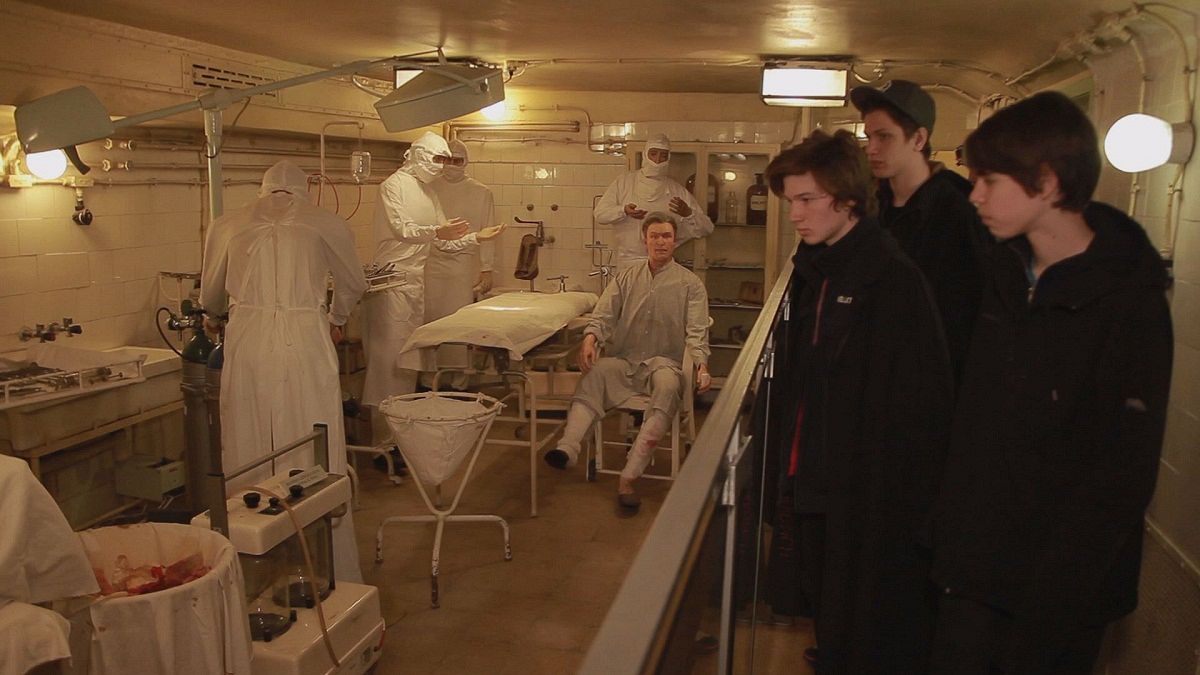Memorising lists of historical facts and figures is increasingly a thing of the past, as teachers explore new ways of making history lessons more engaging.
History is the focus of this edition of Learning World.
Hungary: walking through the past
In Budapest, Hungary, the Bupap City Walks Association guides schoolchildren round the city in search of the past.
One of the spots on the tour is a villa that was used as a secret prison for political prisoners during the Communist era.
Anna Lénárd, from Bupap City Walks, explained the value: “I think learning while walking is better than the traditional way of sitting in the classroom. Visiting historical sites gives a feeling of reality, kids can experience and learn all those things that can seem abstract and distant if you learn them from a book.”
During the 20th century, Hungary fought alongside Germany in both the first and second world wars, sustaining significant damage to their infrastructure, and large numbers of fatalities.
After the second world war, the country became part of the Soviet bloc, and was forcibly administered as a Communist state until 1989.
During the Communist era, hundreds of thousands of Hungarians were arrested, imprisoned, and/or deported. Many died at the hands of an authoritarian regime.
The scars of these historical events are evident everywhere in the capital city, and for some people, the events themselves are within living memory.
One schoolboy, Bertalan, told euronews: “My great-grandmother is 103, so she has seen quite a few things. I think it’s good to have knowledge but better not to experience everything she’s seen.”
His friend Márton said: “We’re currently studying the 20th century in class. It is good to see all this, the places and surroundings.”
Walking through the city brings history to life, and then it is back to the classroom to put pen to paper, and make sense of it all.
For more information about the guided tours, see the Bupap website
Archive pictures come from: Fortepan
Once upon a time
At the Fukuoka International School, in the south-west of Japan, David Van Tol’s history class worked in groups to produce a book about the Colosseum in Rome. Their work was then published online.
David Van Tol explained: “It is very important to look for ways to engage students, and the project mainly came from that motivation. I was looking for projects where students could also have fun writing, not just researching. The students also had fun putting the book together. And it was a project where they could be proud of the end result.”
The first task was to organise chapters, and divide them into sections, so that pairs of students could write about the various subjects in the book. The “games” chapter for example includes sections on gladiators, and wild beasts.
The book has been published online in the iTunes store, and is available to the public for free download here
USA: sourcing stories
At Aragon High School in San Mateo, California, the history class is learning about the Cuban missile crisis of 1962.
But instead of using an old fashioned talk and chalk approach, their teacher, Will Colglazier, is sharing documents so that students can compare information from sources including an article from the Washington Post, a recording of a meeting at the White House with President Kennedy, and a telegram from the Soviet Ambassador in the US to Moscow.
Colglazier believes it is a better way of imparting knowledge: “I came into teaching thinking that I would just know a lot information and I would wax lyrical and the students would just listen, take copious notes, and regurgitate it for a test. But I realised that that’s not what my job should be.”
Using a teaching technique called Historical Thinking Pedagogy, developed by a professor at the Stanford School of Education, Colglazier says he treats his students as real historians: “When historians try to determine what happened, there are no archives or libraries where it says ‘Oh here’s the answer’. They have to deduce the answer, they have to figure it out, they have to investigate.”
So his students analyse the documents, compare them and deduce what actually happened.
Colglazier elaborated: “The content is a means to a different end. It’s meant to teach kids how to think critically, how to be able to read analytically. That’s not to say that content is not important: cultural awareness, knowledge of our nation’s past and the world’s past are very important, we don’t lose that. But it’s not the only aim. Names and facts and dates are not the only things we do here.”
It is not fast, but the hope is that knowledge acquired this way will be retained for longer.
Colglazier says this is better than passively receiving the information : “I could have spent five minutes, three minutes maybe just giving them the answer. But who’s going to remember it tomorrow? Who’s going to remember it next week for the test? By inquiring to find the answer, researching it, they will actually remember it.”
The method does not just improve knowledge retention, it also improves other skills including critical reading and comprehension.
